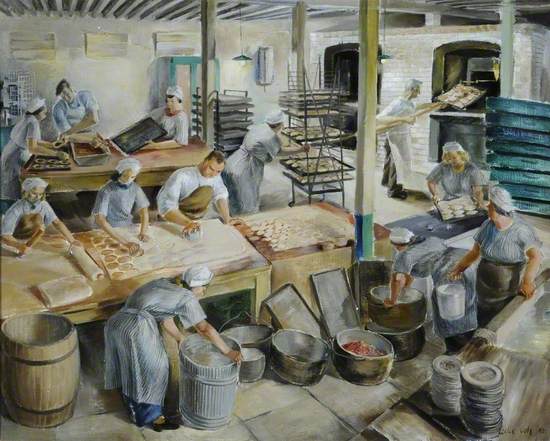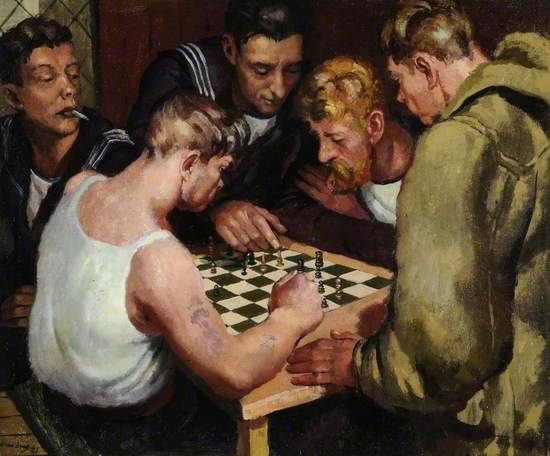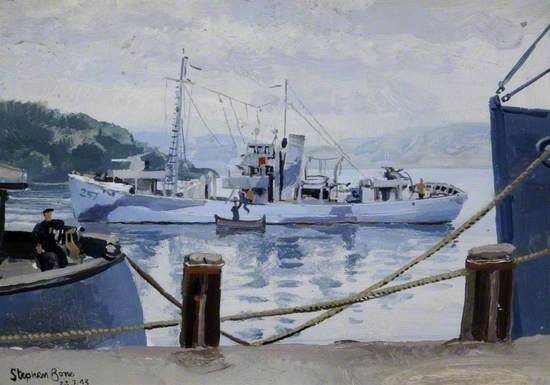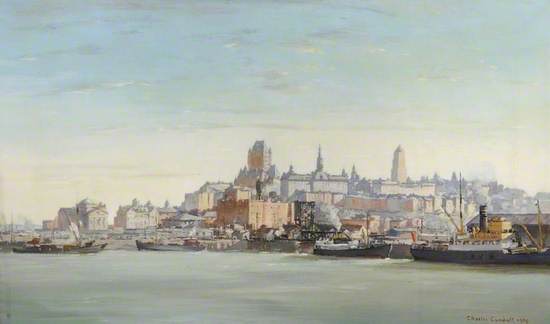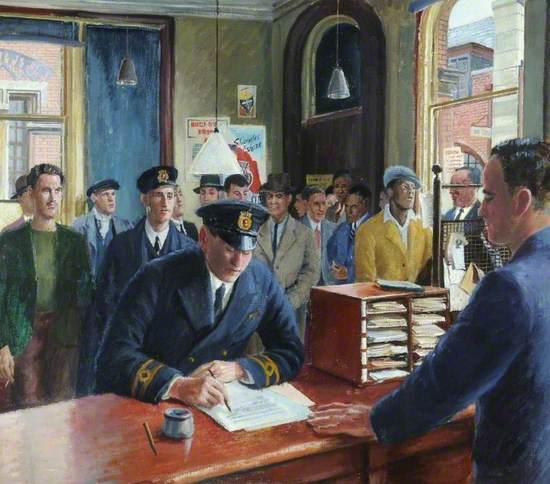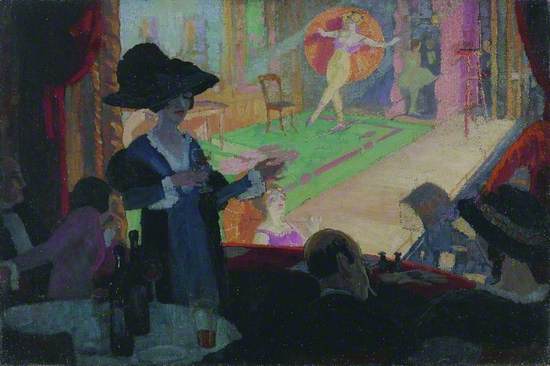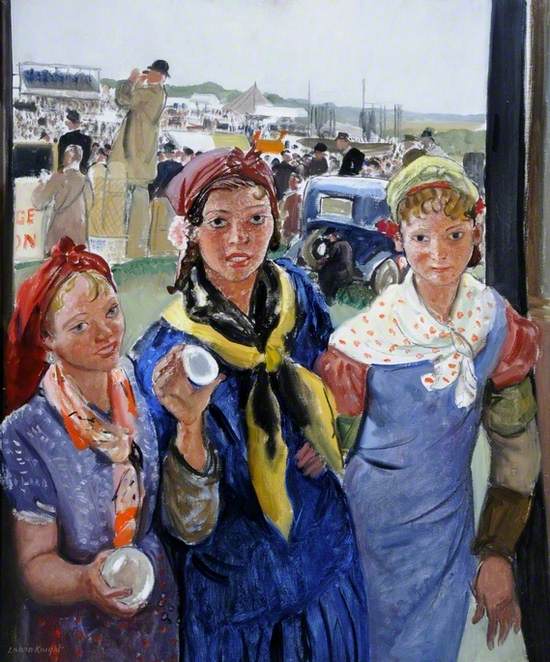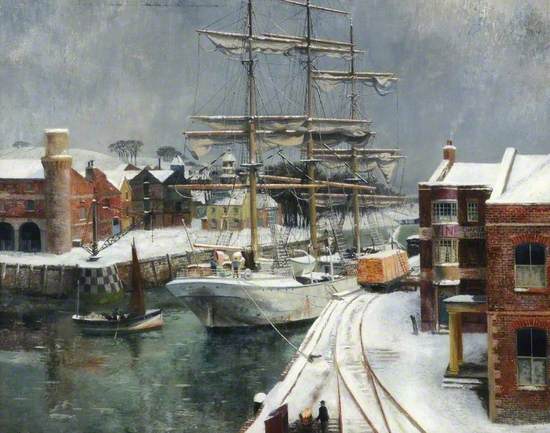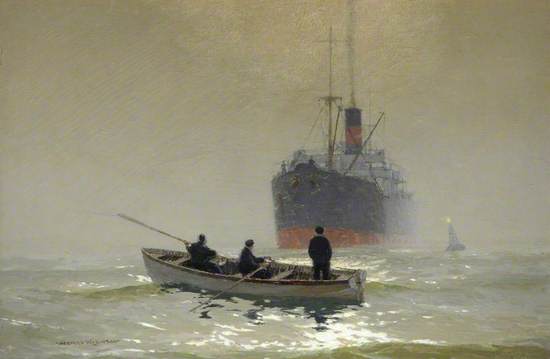In 1939 at the outbreak of World War Two the War Artists Advisory Committee (WAAC) was created within the Ministry of Information. Sir Kenneth Clark, then director of the National Gallery, the instigator of the WAAC, believed that artists would lose their incomes as private commissions, commercial galleries and art schools closed.
Twenty six men were given overseas commissions. Edward Ardizzone, Henry Carr and Edward Bawden travelled to the Middle East, Leslie Cole spent time in Malta, France and South-East Asia, Vivian Pitchforth went to Burma and Anthony Gross went to the Middle East and later joined the Normandy landings.
Towards the end of the war Mary Kessell and Laura Knight were given overseas contracts.
.
Leslie Cole (1910-1976)
When the Second World War broke out, Cole joined the RAF but was discharged on medical grounds. He resumed his teaching job in Hull and attempted to obtain work as a war artist from Sir Kenneth Clark and the WAAC, but was refused at first. In order to impress Clark, Cole took a leave of absence from teaching to sail aboard a destroyer on Gibraltar convoy duties. In 1943 he was awarded his first full-time WAAC commission and went to Malta where he observed the end of the German siege of the Island.
Clark and the WAAC were impressed with the unflinching way Cole had dealt, in his pictures, with the violence he had witnessed in Greece and assigned him to record the aftermath of the liberation of the Bergen-Belsen concentration camp.
Leslie Cole (1910–1976)
Oil on canvas
H 50 x W 63 cm
Ferens Art Gallery
.
William D. Dring (1904-1990)
William Dring was a skilled technician, who produced realistic, restrained and smoothly executed images – both as a painter in oil and watercolour, and as a draughtsman, particularly in pastel.
Following the outbreak of the Second World War, Dring began to receive commissions from the War Artists’ Advisory Committee. Then, in early 1942, he was appointed an Official War Artist to the Admiralty. He travelled extensively across Britain, producing pastel portraits in Portsmouth, Scotland and the Western Approaches. In late summer 1943, he received a second full-time contract that included more general subjects. His third and final contract, in 1944, led him to produce portraits for the Air Ministry.
.
Stephen Bone (1904-1958)
Son of veteran War Artist Sir Muirhead Bone (1876-1953) Stephen was a camouflage officer at the beginning of the war, before being appointed by the War Artists' Advisory Committee in 1943. A prolific artist, Bone produced oil paintings and rapid sketches on board ship, direct from life. Many of his pictures show war vessels at rest in the quiet and secluded locks and harbours of the Scottish Isles.
In the late 1930s was active in the AIA, helping German refugees to settle in England and find work. During World War II became an officer in camouflage operations in Leamington Spa.
Stephen Bone (1904–1958)
Oil on cardboard
H 28.5 x W 39 cm
Ferens Art Gallery
Charles Ernest Cundall (1890-1971)
At the start of World War II, Cundall worked on short-term contracts for the WAAC before being given a full-time salaried commission as an Admiralty artist to work on Merchant Navy subjects. Cundall was later assigned to the Air Ministry. Cundall painted RAF subjects throughout Britain and worked on the commemoration ceremony painting of the Battle of Britain in 1943. he visited Quebec in 1944. At the end of the war, King George VI purchased two of Cundall's paintings showing war-time activities in Windsor Great Park.
In 1940 Cundall and the artist Richard Eurich had two paintings displayed at the National Gallery depicting the evacuation from Dunkirk using eyewitness accounts as neither artist had been present.
Charles Ernest Cundall (1890–1971)
Oil on canvas
H 44.5 x W 75 cm
Ferens Art Gallery
.
Bernard Hailstone (1910-1987)
At the outbreak of World War II Hailstone joined the Auxiliary Fire Service. He drew his comrades and Blitz scenes and was later asked to become an Official War Artist, initially attached to the Ministry of Transport.
After painting convoys in the Atlantic and Mediterranean he joined the South-East Asia Command in 1944. During this period he painted Lord Louis Mountbatten, now in the Imperial War Museum.
He went on to paint Sir Winston Churchill and members of the Royal family.
His painting 'Captain D A Stokes, OBE' is also in the Ferens collection.
Bernard Hailstone (1910–1987)
Oil on canvas
H 88 x W 100.5 cm
Ferens Art Gallery
Adrian Paul Allinson (1890-1959)
During the Second World War, Allinson was selected as an official war artist by the War Artists' Advisory Committee.
His work depicted the effects of war on London landmarks.
After the war he taught at Westminster Technical Institute and continued to work and exhibit into the late 1950s.
Adrian Paul Allinson (1890–1959)
Oil on canvas
H 62 x W 92 cm
Ferens Art Gallery
.
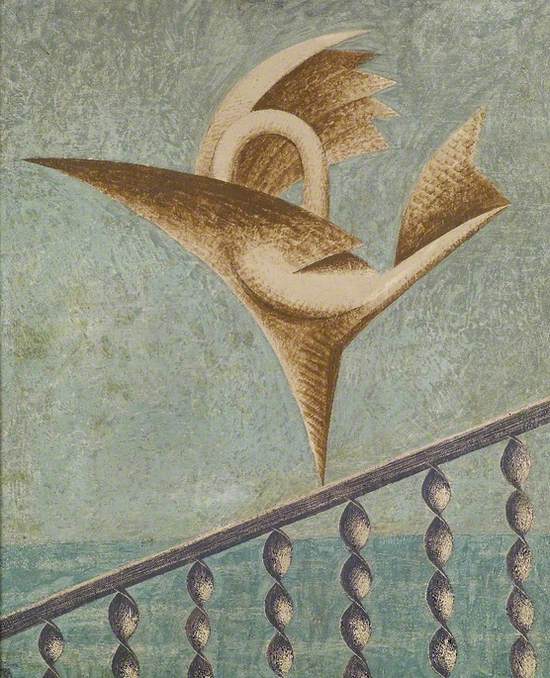
John Armstrong (1893-1973)
Armstrong undertook short contracts for the War Artist's Advisory Committee. His paintings recorded bomb damage to buildings and churches, depicting broken walls and exposed rooms. The artist John Piper praised his work after criticism by the Sunday Times art critic Eric Newton that Armstrong's work was superficial.
Many of his paintings were included in the WAAC Britain at War exhibition held at the Museum of Modern Art in New York in May 1941.
John Armstrong (1893–1973)
Tempera on board
H 77.5 x W 63.5 cm
Ferens Art Gallery
Dame Laura Knight (1877-1970)
Knight was contracted by the WAAC, along with Mary Kessell; they were the only women to be given overseas commissions. In total, Knight had seventeen completed paintings, together with numerous studies, accepted by the WAAC, most of which were exhibited in the National Gallery or the Royal Academy during the war.
Kessell was sent to Germany after the war to document survivors in the Belsen resettlement camp.
Knight proposed to the WAAC that she be sent to record the Nuremberg war crimes tribunal and was commissioned in January 1946, spending three months there.
Richard Eurich (1903-1992)
Despite his German parentage and Quaker principles, Eurich was given a full-time commission to paint Admiralty subjects which lasted from 1941 to 1945. He made several trips on British destroyers and given access to the operations room during the Dieppe raid, listening to the British radio communications as the attack progressed.
Many of his war time paintings were based on photographs and eyewitness accounts, others works of imagination.
Eurich completed thirty four oil paintings and one drawing for the WAAC.
In 1942 he was elected an Associate member of the Royal Academy and became a full Academician in 1953.
His paintings in the Ferens Art Gallery also include, Dorset Cove, 1939 and Marine Harvest, 1949.
Richard Ernst Eurich (1903–1992)
Oil on canvas
H 101.6 x W 127 cm
Ferens Art Gallery
Norman Wilkinson (1878 - 1971)
Norman Wilkinson was a British artist who usually worked in oils, watercolours and drypoint. He was primarily a marine painter, but also an illustrator, poster artist, and wartime camoufleur. He invented dazzle painting to protect merchant shipping during the First World War.
During the Second World War, he was again assigned to camouflage, not in dazzle-painting ships (which had fallen out of favour) but with the British Air Ministry, where his primary responsibility was the concealment of airfields.
He produced nine paintings of the D-Day landings, which Wilkinson had witnessed from HMS Jervis, plus naval actions such as the sinking of the Bismarck.
Explore artists in this Curation
-

Image credit: Bridgeman Images
Richard Ernst Eurich (1903–1992) -
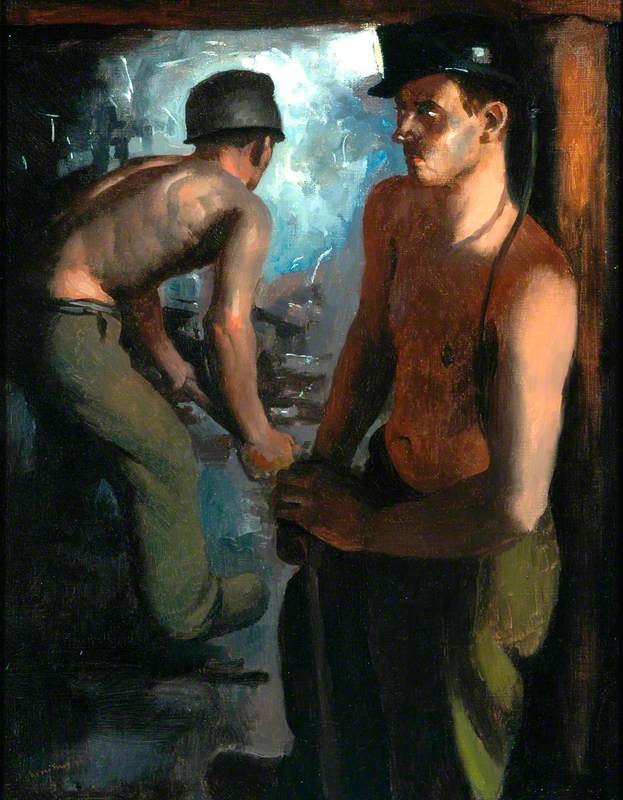
© the artist's estate / Bridgeman Images. Image credit: National Coal Mining Museum for England
William D. Dring (1904–1990) -
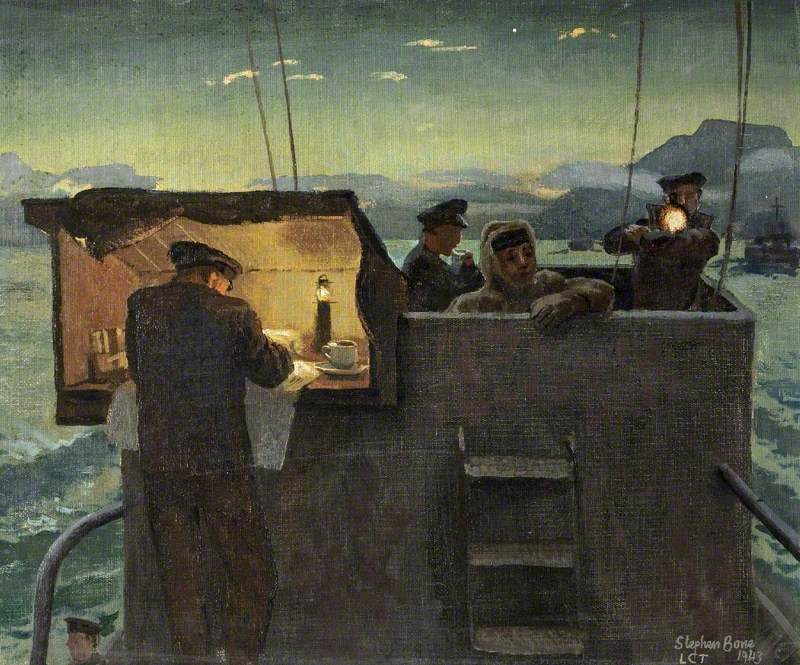
Image credit: Russell-Cotes Art Gallery & Museum
Stephen Bone (1904–1958) -
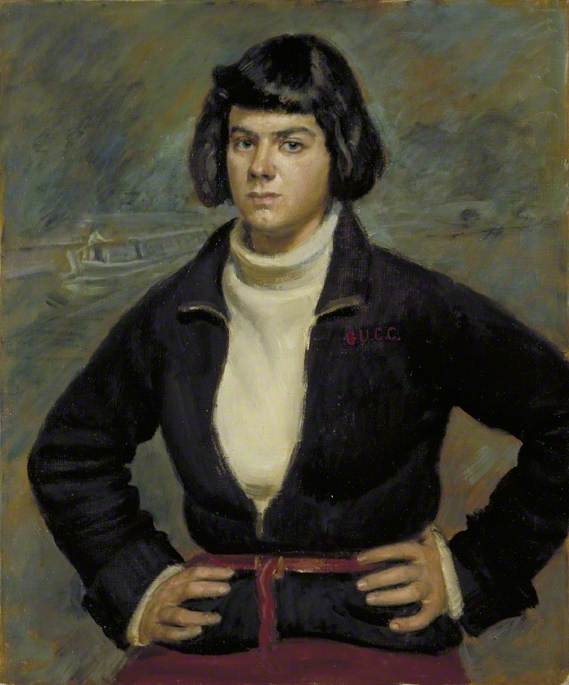
Image credit: IWM (Imperial War Museums)
Bernard Hailstone (1910–1987) -
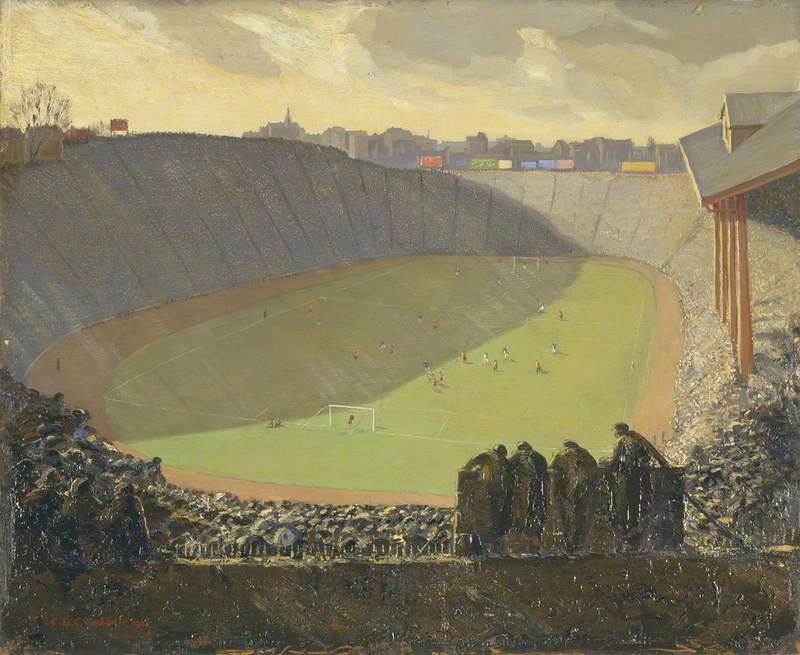
© the artist's estate / Bridgeman Images. Image credit: Manchester Art Gallery
Charles Ernest Cundall (1890–19… -

© the artist's estate / Bridgeman Images. Image credit: Middlesbrough Institute of Modern Art, mima
John Armstrong (1893–1973) -
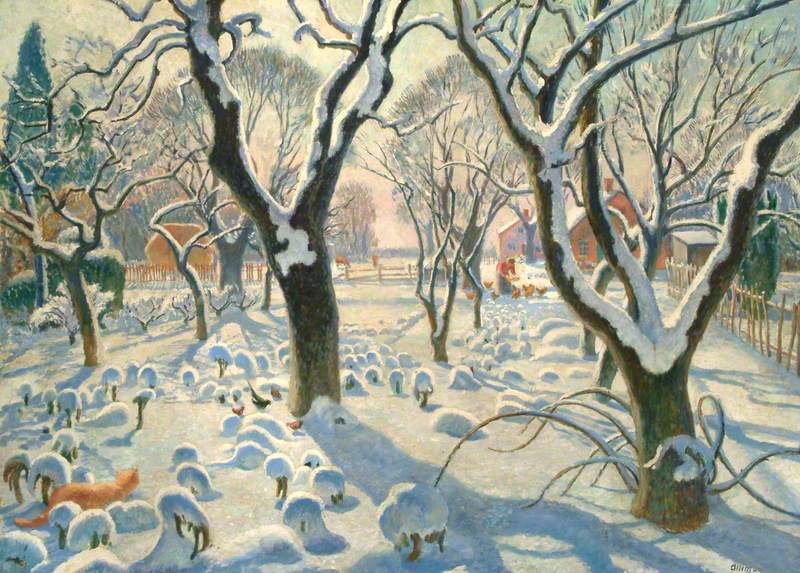
© the artist's estate. Image credit: Brighton & Hove Museums
Adrian Paul Allinson (189… -
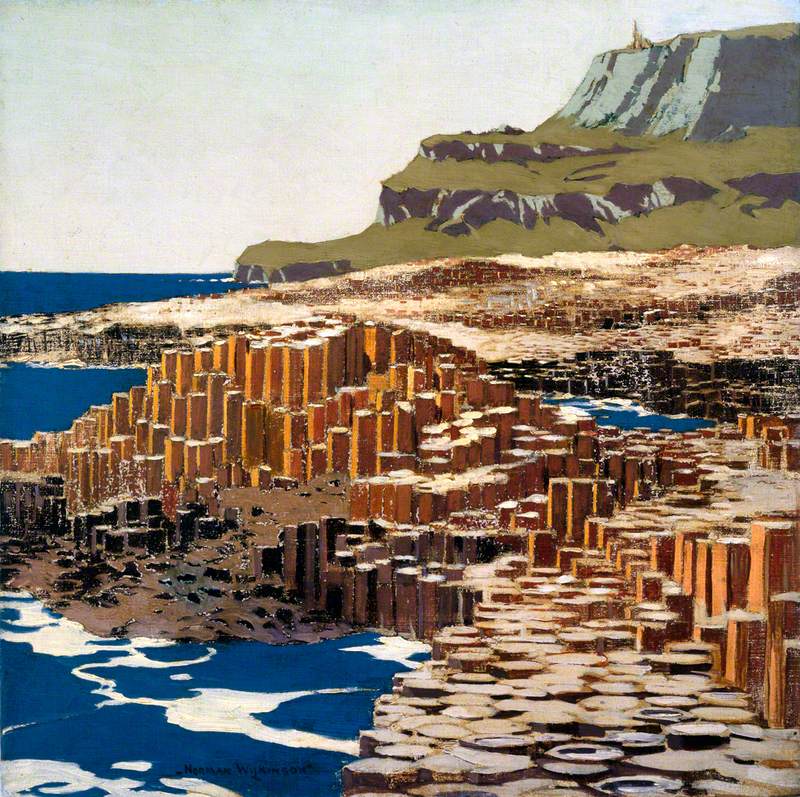
© National Railway Museum. Image credit: National Railway Museum / Science & Society Picture Library
Norman Wilkinson (1878–1971) -
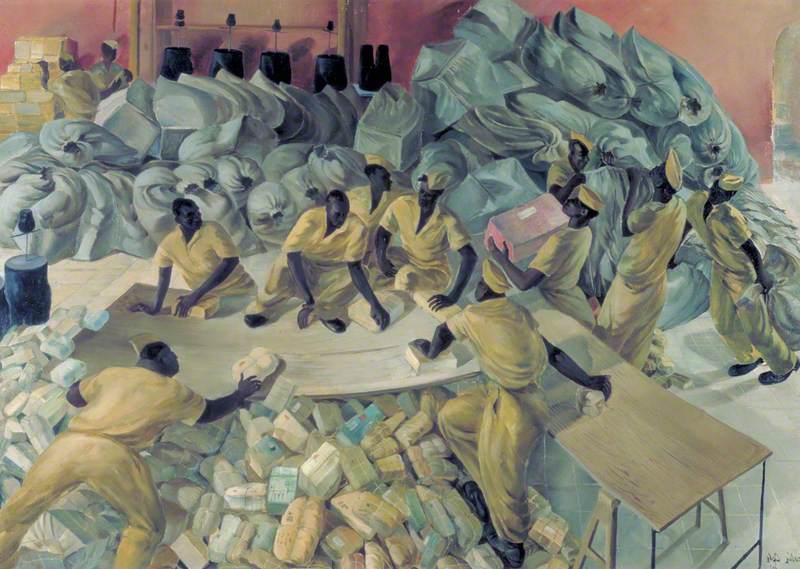
Image credit: IWM (Imperial War Museums)
Leslie Cole (1910–1976) -
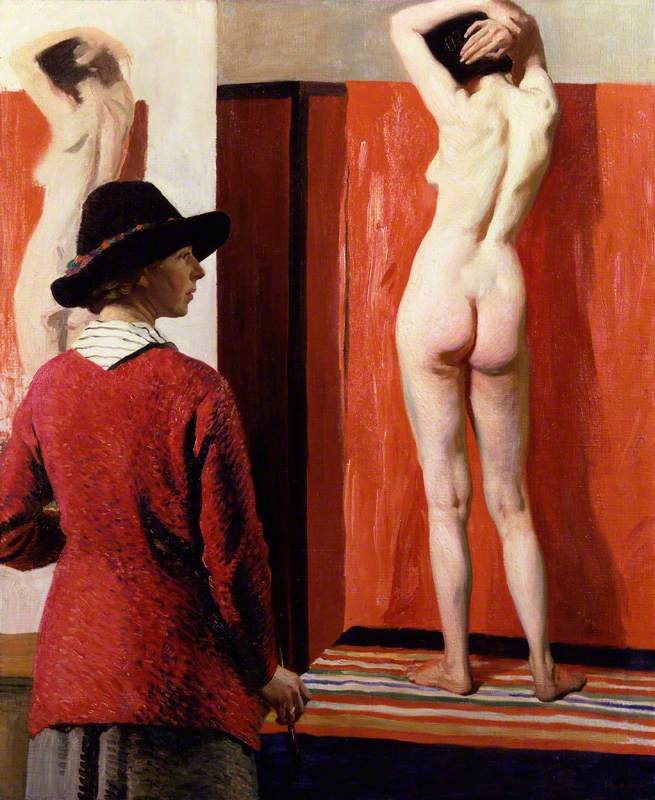
© reproduced with permission of the estate of Dame Laura Knight, DBE, RA / Bridgeman Images. Image credit: National Portrait Gallery, London
Laura Knight (1877–1970)
